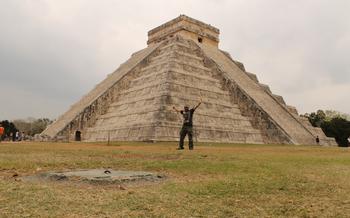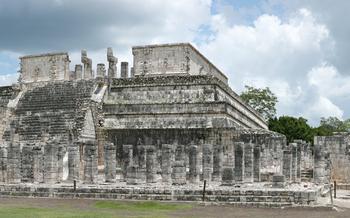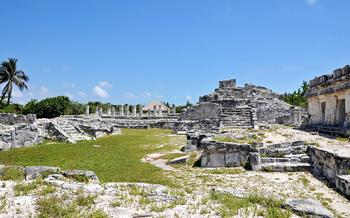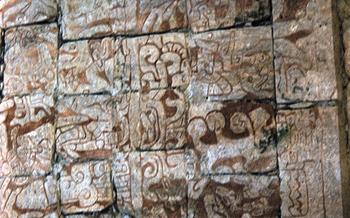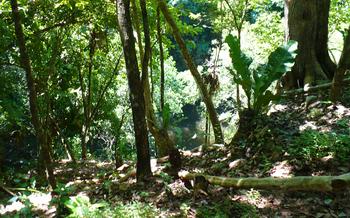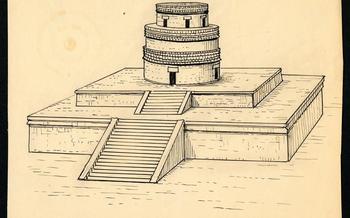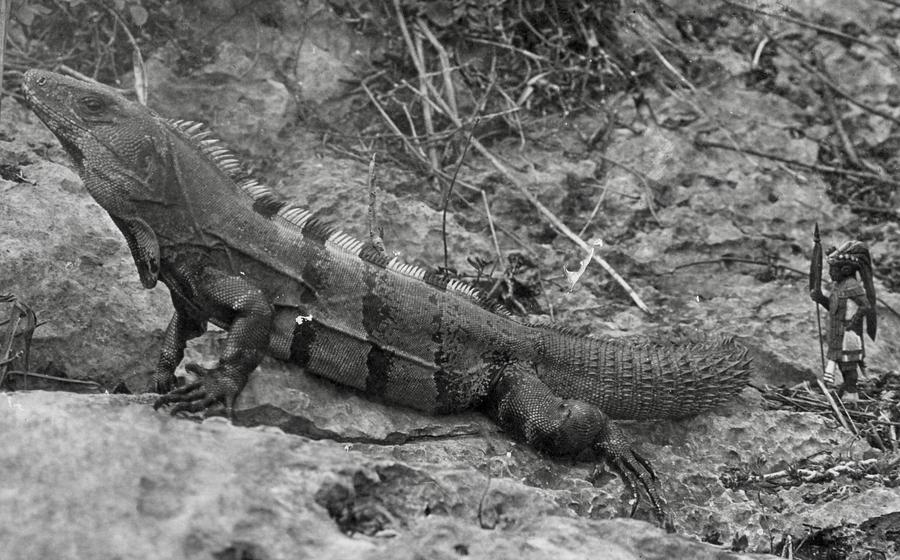
Cenote Chelentun
- Chichen Itza and the Cenote Chelentun
- History of Chichen Itza
- The Sacred Cenote
- Other Cenotes Near Chichen Itza
- The Maya Ball Game
- Photography Tips for the Cenote
- Visiting Chichen Itza on a Day Trip
- Chichen Itza and the Equinox
- Local Cuisine and Restaurants
- The Kukulkan Pyramid
- Other Things to Do in Chichen Itza
- Cultural Tours and Workshops
- Insider Tip
Chichen Itza and the Cenote Chelentun
In the heart of the Yucatan Peninsula, nestled amidst the ancient ruins of Chichen Itza, lies a hidden gem known as the Cenote Chelentun. This natural wonder, with its crystal-clear waters and otherworldly beauty, offers a refreshing retreat from the sun-drenched Mayan ruins.
Location and Access: The Cenote Chelentun is situated just a short distance from the main Chichen Itza complex, making it an easy add-on to your exploration of the archaeological site. To get there, follow the signs from the main entrance of Chichen Itza or hire a local guide who can lead you directly to this hidden oasis.
What to Expect: As you approach the cenote, you'll be greeted by a lush tropical landscape, with towering trees and vibrant vegetation surrounding the crystal-clear waters. A wooden staircase leads down into the cenote, providing easy access to the refreshing waters below.
Natural and Cultural Significance: Cenotes, which are natural sinkholes formed by the collapse of limestone bedrock, hold great significance in Mayan culture. They were considered sacred portals to the underworld and a source of life-giving water. The Cenote Chelentun, with its pristine waters and mystical atmosphere, embodies the deep connection between the Maya and the natural world.
History of Chichen Itza
The Maya civilization, one of the most advanced and sophisticated civilizations of the pre-Columbian Americas, flourished in Mesoamerica from around 2000 BC to the 16th century AD. Chichen Itza, located in the Yucatán Peninsula of Mexico, played a pivotal role in Maya history as a major political, economic, and religious center.
The city reached its peak during the Terminal Classic period (800-1000 AD) and became the dominant power in the northern Maya region. Under the rule of powerful dynasties, such as the Itzá, Chichen Itza expanded its influence through trade, alliances, and military conquests.
The city's architectural and cultural legacy is a testament to the Maya's remarkable skills in engineering, mathematics, astronomy, and art. The iconic Kukulkan Pyramid (also known as El Castillo), the Great Ball Court, the Temple of the Warriors, and the Group of a Thousand Columns are just a few of the impressive structures that stand as symbols of Maya ingenuity and craftsmanship.
Archaeological discoveries at Chichen Itza have shed light on the complex social, political, and religious systems of the Maya. The city's rich history continues to fascinate scholars and visitors alike, making it one of the most important and well-preserved archaeological sites in the Maya world.
The Sacred Cenote
For the ancient Maya, cenotes were sacred bodies of water, revered as gateways to the underworld and portals to communicate with the gods. The Cenote Chelentun held particular religious significance, believed to be a place of pilgrimage and offerings. Maya priests and rulers would perform rituals and ceremonies at the cenote, seeking divine guidance and favor. Offerings, including precious objects, jewelry, and even human sacrifices, were made to appease the gods and ensure the well-being of the community. Cenotes were also seen as a source of life and water, providing sustenance and spiritual nourishment to the Maya people.
Other Cenotes Near Chichen Itza
In addition to the Cenote Chelentun, there are several other cenotes in the vicinity of Chichen Itza that are worth exploring. Each cenote has its own unique features and attractions.
-
Cenote X'Kekén: This hidden gem is located about 15 minutes from Chichen Itza. It features stunning rock formations and crystal-clear waters. Visitors can swim, snorkel, and explore the underwater caves.
-
Cenote Ik Kil: This popular cenote is known for its large swimming area and lush vegetation. It is a great place for swimming, snorkeling, and diving. Visitors can also climb down a ladder to a platform in the center of the cenote for a unique perspective.
-
Cenote Hubiku: This lesser-known cenote is located about 20 minutes from Chichen Itza. It offers crystal-clear waters and a peaceful atmosphere. Visitors can swim, snorkel, and relax on the wooden deck.
-
Cenote Zací: This cenote is located within the city of Valladolid, about 45 minutes from Chichen Itza. It is a popular spot for locals and tourists alike. Visitors can swim, snorkel, and explore the underwater caves. There are also several restaurants and shops in the area.
The Maya Ball Game
The ancient Maya ball game, known as Pok-ta-Pok, was a highly significant ritual and sport that played a central role in Maya culture. The Great Ball Court at Chichen Itza is one of the largest and most impressive ball courts in the Maya world.
The game was played on a long, narrow court with sloped sides and two large stone rings mounted on the walls. The objective was to hit a solid rubber ball through one of the rings using only the hips, knees, elbows, and shoulders. The game was fast-paced and required skill, agility, and strength.
The Maya ball game had both religious and political significance. It was believed that the game represented the struggle between the gods of the underworld and the gods of the sky. The outcome of the game was seen as an omen that could affect the fate of the community. The winning team was often rewarded with gifts and prestige, while the losing team sometimes faced harsh consequences.
The ball game was also a form of entertainment and a way for the Maya to demonstrate their physical prowess. It was a popular spectator sport, and large crowds would gather to watch the games. The game was often accompanied by music, dancing, and other festivities.
The Maya ball game was a complex and sophisticated sport that played an important role in Maya society. It was a symbol of Maya culture and a testament to the creativity and ingenuity of the Maya people.
Photography Tips for the Cenote
Capturing the beauty of the Cenote Chelentun in photographs is a must for any visitor. Here are some tips to help you take stunning shots:
-
Use a Waterproof Camera or Housing: Since you'll be swimming and snorkeling, a waterproof camera or a housing for your DSLR is essential to protect your equipment from water damage.
-
Recommended Camera Settings: For clear and vibrant underwater shots, set your camera to Aperture Priority mode (A or Av) and use a wide aperture (low f-number) such as f/8 or f/This will allow more light into the lens, resulting in brighter and more colorful images.
-
Tips for Taking Underwater Photos: When taking underwater photos, remember to keep your lens clean and free of water droplets. Use the camera's built-in flash sparingly, as it can create harsh shadows and reflections. Instead, try to utilize natural light by positioning yourself so that the sun is behind you or to the side.
-
Instagrammable Spots: There are several Instagrammable spots within the Cenote Chelentun. Look for areas with clear water, interesting rock formations, and vibrant aquatic plants. The cenote's entrance, with its lush vegetation and cascading vines, is also a popular spot for photos.
Visiting Chichen Itza on a Day Trip
Exploring Chichen Itza on a day trip from popular tourist destinations like Cancun, Playa del Carmen, or Tulum is an enriching and convenient option. Here's how to plan your day trip:
Early Start: Embark on your journey early to make the most of your time at Chichen Itza. Aim to arrive by 8 AM to avoid the scorching midday heat and the influx of tour groups.
Transportation: Choose your transportation mode wisely. While rental cars offer flexibility, guided tours provide insights and hassle-free experiences. Buses are a budget-friendly option, but they may limit your time at the site.
Guided Tours vs. Independent Travel: Guided tours offer historical context and eliminate the need for extensive research. However, independent travelers have more flexibility to explore at their own pace and avoid crowds.
Crowd Avoidance: To beat the crowds, consider visiting Chichen Itza during the shoulder season (May-June or September-October) or on weekdays. Arriving early or staying late can also help you avoid the peak tourist hours.
Chichen Itza and the Equinox
Chichen Itza holds a profound astronomical significance, serving as a testament to the Maya's advanced understanding of celestial events. Twice a year, during the spring and fall equinoxes, the sun aligns perfectly with the Kukulkan Pyramid, casting a captivating shadow that resembles a serpent slithering down the pyramid's steps. This phenomenon, known as the "descent of Kukulkan," attracts thousands of visitors who gather to witness this awe-inspiring spectacle.
Cultural celebrations and rituals accompany these equinoxes, creating a vibrant and spiritual atmosphere. Maya dancers, musicians, and performers showcase their talents, paying homage to their ancestors and honoring the cyclical nature of life and the cosmos. Visitors can immerse themselves in the rich Maya culture, gaining insights into their profound connection with the natural world and their sophisticated knowledge of astronomy.
Local Cuisine and Restaurants
When visiting Chichen Itza, don't miss the opportunity to savor the delicious local cuisine. Traditional Maya dishes are a blend of Mayan and Spanish influences, featuring fresh ingredients and vibrant flavors. Must-try dishes include Cochinita Pibil, a slow-roasted pork dish cooked in banana leaves, and Panuchos, which are fried tortillas topped with refried beans, shredded chicken or turkey, and a tomato sauce. For a taste of the sea, try Tikin Xic, a grilled fish dish marinated in achiote paste.
For a memorable dining experience, head to one of the many restaurants in Chichen Itza. La Hacienda Chichen Resort offers a fine dining experience with a focus on regional cuisine. El Jaguar offers a more casual setting with traditional Maya dishes and live music. For a quick bite, try the street food stalls around the town square, where you can find tacos, empanadas, and fresh fruit.
Vegetarians and vegans will find plenty of options in Chichen Itza. Many restaurants offer meat-free dishes, such as vegetarian tacos, grilled vegetables, and fresh salads. Local markets are also a great place to find fresh produce, nuts, and seeds.
The Kukulkan Pyramid
In the heart of Chichen Itza lies the iconic Kukulcan Pyramid, a towering testament to Maya ingenuity and grandeur. With its imposing presence and intricate details, this awe-inspiring structure captivates visitors from around the world. The pyramid, also known as El Castillo, rises 79 feet (24 meters) above the ground, showcasing the Maya's advanced architectural prowess. Its four sides are adorned with 91 steps, representing the 365 days of the solar year.
The pyramid's intricate design goes beyond its symbolic significance. The staircases on each side are aligned with the solstices and equinoxes, demonstrating the Maya's deep understanding of astronomy. During the spring and fall equinoxes, the setting sun casts a shadow on the pyramid's northwestern corner, creating the illusion of a serpent descending the stairs, a phenomenon known as the "descent of Kukulcan." This celestial spectacle attracts thousands of visitors each year, who gather to witness this extraordinary natural event.
Other Things to Do in Chichen Itza
Beyond the Cenote Chelentun, Chichen Itza offers a wealth of other attractions that provide a glimpse into the grandeur of the Maya civilization.
-
Temple of the Warriors: This impressive temple stands as a testament to the Maya's architectural prowess. With its intricate carvings and towering presence, it's a must-see for any visitor.
-
Group of a Thousand Columns: As the name suggests, this awe-inspiring complex features hundreds of columns arranged in a grid-like pattern. It's a photographer's paradise and offers a glimpse into the sheer scale of Maya construction.
-
Great Platform: This massive platform served as a foundation for several important structures, including the Kukulkan Pyramid. Its sheer size and engineering feats are a testament to the Maya's advanced knowledge of architecture and engineering.
-
Traditional Maya Ceremony: For a truly immersive experience, consider attending a traditional Maya ceremony conducted by local shamans. These ceremonies offer a glimpse into the spiritual beliefs and practices of the Maya people.
Cultural Tours and Workshops
Immerse yourself in the vibrant Maya culture by embarking on a cultural tour or participating in a hands-on workshop. Delve into the history, traditions, and beliefs of this ancient civilization through guided tours led by knowledgeable local experts. Learn about the significance of Maya symbols, rituals, and ceremonies, and gain insights into their way of life.
Participate in a cooking class to master the art of preparing traditional Maya dishes using fresh, local ingredients. Discover the flavors and techniques that have been passed down through generations, creating a culinary journey that will tantalize your taste buds.
Visit a traditional Maya village to experience firsthand the customs, crafts, and daily life of the Maya people. Engage with the locals, learn about their unique perspectives, and support their community by purchasing handmade souvenirs and crafts.
Support local artisans and craftsmen by visiting their workshops and galleries. Admire the intricate textiles, pottery, jewelry, and wood carvings that showcase their exceptional skills and creativity. Take home a piece of Maya artistry as a cherished memento of your visit.
Insider Tip
For an unforgettable and tranquil experience at the Cenote Chelentun, plan your visit during the early morning hours or late afternoon when the crowds are fewer. Immerse yourself in the serene atmosphere, bask in the golden hues of sunrise or sunset, and enjoy the cenote's natural beauty without the hustle and bustle of peak tourist hours. This insider tip will allow you to fully appreciate the tranquility and magic of this hidden gem.
